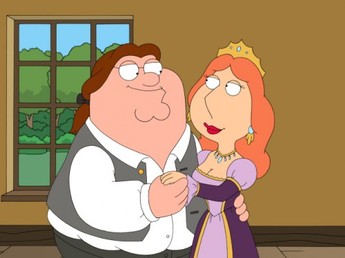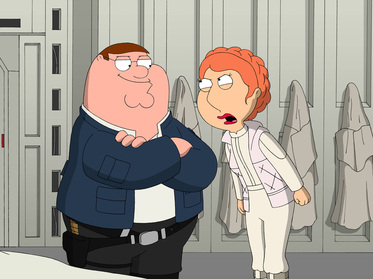Media Review: "The Simpsons" by Ruth Teer-Tomaselli

In this article, the author explains the "Beauty and the Beast" theory that applies to shows like the Simpsons including Family Guy. In it, Tomaselli talks about how Matt Groening (creator of the Simpsons and Futurama) "uses two of the most pervasive forms of cultural expression, and subverts them in order to carry contrary messages"(Tomaselli,4). What Tomaselli means is that Groening has taken certain aspects of life that can be seen as traditional or "stereotypical", and added a spin to show contrasting viewpoints. For example, the article notes that The Simpsons leans towards women empowerment with Marge always bailing Homer out of trouble. This contrasts the traditional role of men being the dominant gender. In relation to Family Guy, the same theory applies in which life is exaggerated to resemble life at higher magnitudes along with implicit messages. Like in the Simpsons, Family Guy tends to portray women empowerment in miniscule ways. It looks down upon women when they are made fun of, but through the actions of male characters like Peter compared to female characters like Lois, one can see that women are smarter and more powerful even though they are oppressed in society. This is a resemblance of modern society today and how women are still looked down upon, even though they have elevated their position in our country to that of men. Despite the fact women have reached these heights, we still haven't witnessed a woman president and in most cases, men make more money than women.
hfm,rj,rj,f

Another important detail the author noted in the article was a quote from a report on Popular Television and Schoolchildren. The quote said:" the products of television may be the main source of significant influence on the way in which their images of certain groups develop", when speaking in regards to young children. When deconstructing Family Guy, the subliminal message of women empowerment through women oppression is difficult for children to comprehend, that is why the show is designated for a more "mature" audience. With target audience in mind, Family Guy attacks society by showing their flaws and way of life through their episodes.
The depiction of the traditional family was also an important component of this article that backed up my thesis. Tomaselli explains the traditional family in The Simpsons with a father, mother, and kids which applies to Family Guy as well. He talks about how these kind of shows provide different views of the common family, but don't challenge the "institution", which means the way it ought to be portrayed in society. Family Guy does this by having a typical family with exaggerated characters for each role. It has the working dad, the stay at home wife, kids, and a pet. The more radical views that challenge the norm are those of how each character is exaggerated to show the audience family life in a more satirical way. Tomaselli explains that sit-coms like The Simpsons have influenced the standard of what is the norm in our society and that is what Family Guy argues through their crude humor and negative depictions. In the end, I learned that Family Guy represents our culture which in the article is defined as our society constantly evolving and developing to a new norm each time around.
The depiction of the traditional family was also an important component of this article that backed up my thesis. Tomaselli explains the traditional family in The Simpsons with a father, mother, and kids which applies to Family Guy as well. He talks about how these kind of shows provide different views of the common family, but don't challenge the "institution", which means the way it ought to be portrayed in society. Family Guy does this by having a typical family with exaggerated characters for each role. It has the working dad, the stay at home wife, kids, and a pet. The more radical views that challenge the norm are those of how each character is exaggerated to show the audience family life in a more satirical way. Tomaselli explains that sit-coms like The Simpsons have influenced the standard of what is the norm in our society and that is what Family Guy argues through their crude humor and negative depictions. In the end, I learned that Family Guy represents our culture which in the article is defined as our society constantly evolving and developing to a new norm each time around.
